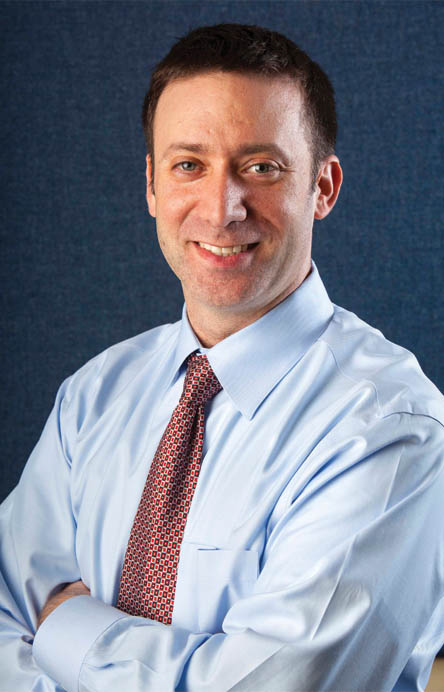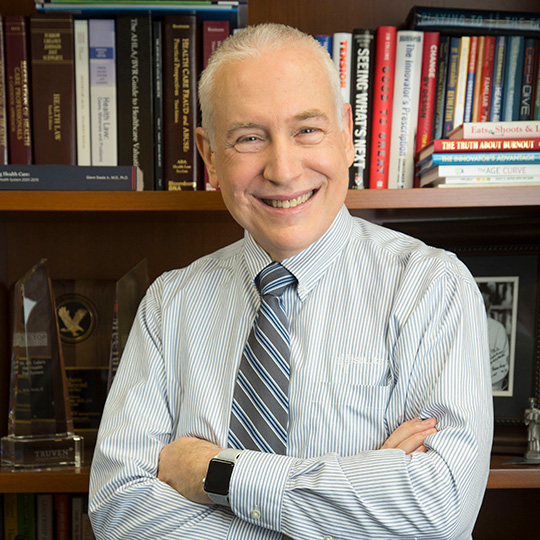St. Luke's Dr. Chasin Goes to Washington
St. Luke’s envisions seamless, integrated care. With this, we will tackle one of the foundational problems in health care, one that nearly every healthcare expert agrees is responsible for poorer quality outcomes, higher occurrence of patient harm, and needless additional cost due to duplication of tests and procedures – fragmentation of the healthcare delivery system.
As I have said previously, “seamless” is from the view of the patient and her family, and “integrated” is from the view of the physician and caregivers.
Seamlessness means that patients don’t have to re-register at every point in the system, don’t have to fill out a new patient history form with each visit to each provider, and don’t have to request medical records from one provider to make available to another.
Integrated means that any physician or provider involved in the care of a patient has access to the physician notes of all specialists involved in the patient’s care, all the lab and imaging results, medication records, and other information necessary to coordinate the patient’s care and ensure that it is the most cost-effective by eliminating the risk of medication duplications or interactions and the costs of repeating tests and procedures unnecessarily.
St. Luke’s is well on the way, due to the commitment of our physicians and employees and the superstar leader we have in Dr. Marc Chasin, our chief information officer. Dr. Chasin realizes the challenges of getting disparate computer systems to talk to each other (interconnectivity) and to share and update data in real time (interoperability).
Not only is Dr. Chasin leading our efforts here at St. Luke’s, but he is leading efforts nationally in many areas. Here is blog editor Roya Camp’s report on what Dr. Chasin is doing to fix health care!
St. Luke’s Health System’s experiences with electronic health records are helping to inform national policy.

Dr. Marc Chasin, St. Luke’s chief information officer, spent time earlier this summer in Washington, D.C., helping members of Congress and congressional staff members understand the complexities and challenges of health data system interoperability.
His engagement is likely to continue as Congress wades into a third phase of “meaningful use,” the initiative and set of financial incentives implemented by the federal government to encourage hospitals and health systems to adopt and expand the use of electronic health records.
St. Luke’s own adoption and expansion of electronic health records is continuing. The System is beginning implementation of the system in hospital settings following a broad implementation in dozens of clinics over the past several years.
Dr. Chasin’s involvement in the Washington information-gathering sessions stems from his work with the Idaho Health Data Exchange and the Care Everywhere Network, an international organization of hospitals and health systems that have adopted the Epic platform. Dr. Chasin serves as Care Everywhere chairman.
The Idaho Health Data Exchange connects hospitals, clinics, and health systems to a repository. Many different electronic health records platforms – and Epic is one of many companies that offer such a product, even if it’s larger than most – can connect to the exchange, but the data itself is neutral, and the system is structured to work for all.
But because the companies offering electronic health records platforms are not sharing a common set of “rules of the road,” easy access between hospitals, health systems, and clinics not on the same systems is stymied.
During a first visit, Dr. Chasin spoke with subcommittee members of the House Energy & Commerce Committee and with committee Chairman U.S. Rep. Fred Upton, R-Mich. He also met with staff members from the offices of U.S. Rep. Henry Waxman, D-Calif., and U.S. Sen. Sheldon Whitehouse, D-R.I.
He subsequently was invited to return and did so, sharing information during a second trip with staff members of the U.S. Senate Committee on Health, Education, Labor & Pensions.
In each case, Dr. Chasin shared his observations, that the use of electronic health records would be substantially improved and the goals of meaningful use reached if agreements were in place with all participants that guaranteed the quality standard of the data being moved, along with the method of delivery, and a provider directory established and adhered to.
Since one electronic health records system platform can’t “see” the doctors in another system’s platform, for example, it can’t “find” the right Dr. Johnson, for example, out of the dozens in, say, New York. There’s also no way to guarantee that the information flowing in, and then out, is correct or applies to the right patient, or that the patient is universally identified in one consistent way.
Dr. Chasin’s St. Luke’s experience was instructive for his congressional audiences. St. Luke’s itself experiences challenges when a patient identified in one way at one St. Luke’s location needs to engage with the System in another location, where patient identification might be very different.
Add in the challenges of a rural service area that is geographically dispersed and includes small practices and clinics, many of which have had different coding and identification methods, and the complexities are multiplied.
At the same time, the region has experienced unusual success with meaningful use, in large part due to St. Luke’s work to implement records across the System.
“It was very impactful,” Dr. Chasin said. “They want to hear from people who are actually experiencing what reality is. There was a crowd when I presented.”
The interoperability issues are daunting, Dr. Chasin observed, and congressional staff members have their work cut out for them in coming to the best recommendations. Legislation is not likely to be immediately forthcoming, he believes.
“It’s very complex for a legislator or someone who does not understand the environment,” Dr. Chasin said. “They’re sharp people, but it’s different. It’s going to be a long time. We just need to keep on going forward and facilitating the ability to exchange information transparently.”
What’s next for Dr. Chasin? He thinks his activity on the national level will continue, and he’s interested in becoming involved in the Energy & Commerce Committee's 21st Century Cures Initiative, which is concerned with many aspects of healthcare transformation, and the work of CareQuality, a consortium of IT companies, health systems, and other organizations working on some of the collaboration challenges.
In the end, Dr. Chasin believes his participation on the national scene serves St. Luke’s patients every bit as much as the efforts he and his team make every day closer to home.
No matter the setting, “I want to make sure we can have a facile, agile IT environment and enable patient care,” he said. “Patients need to have their information travel with them.”
About The Author

David C. Pate, M.D., J.D., previously served as president and CEO of St. Luke's Health System, based in Boise, Idaho. Dr. Pate joined the System in 2009 and retired in 2020. He received his medical degree from Baylor College of Medicine in Houston and his law degree from the University of Houston Law Center.
